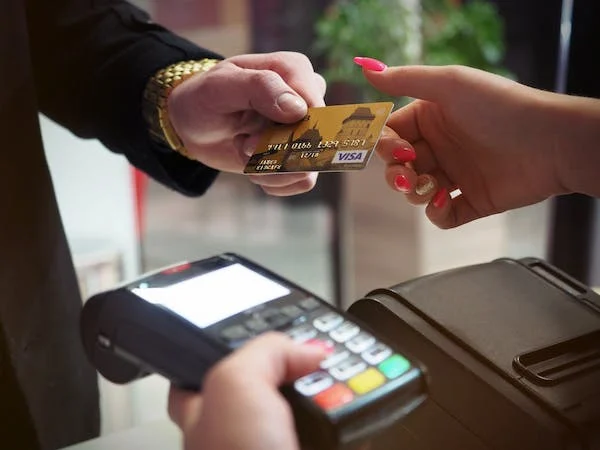Foreign transaction fees can be a hidden enemy that eats away at your budget when you use your credit or debit card while traveling abroad. Banks and credit card companies charge these fees for converting your money from one currency to another. Typically, these fees range from 1-3% of the total transaction amount, which can add up quickly over a trip. Some cards also charge a flat fee for each foreign transaction made. As a result, checking the fee structure of your cards before traveling overseas is essential. One way to avoid these fees is by using a credit card that doesn’t charge foreign transaction fees or opting for currency exchange services with lower fees.
By being mindful of foreign transaction fees, you can better manage your travel expenses and save money abroad.
What are foreign transaction fees?

Foreign transaction fees are charges credit card companies or banks impose when you purchase in a foreign currency. These fees typically range from 1% to 3% of the total transaction amount and can add up quickly if you frequently make international purchases.
They are meant to cover the cost of converting your money from one currency to another and processing the transaction across different financial systems. Many credit cards and banks charge a flat fee for each foreign trade, increasing the overall cost.
It’s essential to be aware of these fees before traveling abroad or online purchases from foreign vendors, as they can significantly impact your spending. Some credit cards offer no foreign transaction fee as a perk, so it’s worth considering those options if international transactions are an everyday part of your financial activities.
Why do credit card companies charge them?

Credit card companies charge foreign transaction fees to cover the cost of converting currencies and processing international transactions. When a customer uses their credit card in a different country, the company incurs expenses related to currency exchange and handling cross-border payments. These fees help offset these expenses and minimize the risk associated with fluctuating exchange rates. Credit card companies may also pass on fees charged by other financial institutions involved in processing international transactions.
The foreign transaction fee typically ranges from 1-3% of the purchase amount and is applied to any transaction made in a foreign currency or processed outside the cardholder’s home country. Some credit cards explicitly waive foreign transaction fees, making them more appealing for travelers or individuals who frequently purchase from international merchants. Moreover, understanding these charges can help consumers choose the best payment method when traveling abroad or shopping online from overseas vendors.
The rationale behind credit card companies charging foreign transaction fees revolves around covering operational costs and managing risks associated with conducting business across borders. These fees contribute to maintaining and optimizing the infrastructure required for seamless international payment processing while keeping potential currency exchange risks in check for customers and financial institutions.
Ways to avoid foreign transaction fees
Foreign transaction fees can add up quickly when using credit cards overseas. One way to avoid these fees is to use a credit card that does not charge foreign transaction fees. Look for cards that specifically advertise this feature, as many traditional credit cards do levy additional charges for purchases made outside the country.
Another option is opening a bank account with an institution with global branches or partnerships. This could allow you to withdraw cash from ATMs abroad without incurring extra foreign transaction fees.
It’s also worth considering carrying local currency when traveling to avoid unnecessary exchange rate markups and fees. Utilizing traveler’s checks or prepaid travel cards can be another effective strategy for managing expenses without being hit by foreign transaction fees.
Researching and comparing different financial institutions’ fee structures before international travel can help identify the most cost-effective options. Finally, staying updated on changes in foreign transaction fee policies and seeking advice from experienced travelers or financial professionals can also provide valuable insights.
Impact of foreign transaction fees on travelers
Foreign transaction fees can have a significant impact on travelers. Credit card companies and banks charge these fees for making purchases in foreign currencies. They typically range from 1-3% of the transaction amount, which can add up quickly, especially for frequent travelers.
For example, if a traveler spends $2000 abroad, they could pay an extra $60 in foreign transaction fees alone. This additional cost can be an unwelcome surprise for travelers who may not be aware of these fees before traveling.
Using cash at ATMs or exchanging currency at physical locations can incur additional fees and less favorable exchange rates.
Travelers must be aware of these fees and their potential impact on their budget while planning their trips. Travel-friendly credit cards or prepaid travel money cards that offer no foreign transaction fees can help minimize these costs and ensure a smoother travel experience for international visitors.
Comparing different credit cards for foreign transactions
When comparing credit cards for foreign transactions, it’s important to consider the foreign transaction fees. Some credit cards charge a percentage of the transaction amount as a fee for purchases made in a foreign currency, while others have no foreign transaction fees at all. Additionally, some cards may offer competitive exchange rates and special rewards or benefits for international purchases.
Before choosing a credit card for overseas use, it’s advisable to thoroughly review the terms and conditions to understand the specific fees associated with foreign transactions. Look for credit cards that have low or no foreign transaction fees, as these can help save money when traveling abroad or making purchases from international merchants. In addition to fees, consider other features such as travel insurance coverage, emergency assistance services, and acceptance across various countries.
Checking if a credit card is widely accepted around the world can also be crucial when deciding on the best option for overseas spending. Keep in mind that certain credit card issuers may provide additional benefits like airport lounge access or concierge services that could enhance your overall travel experience. Overall, conducting research and understanding the details of a credit card’s foreign transaction terms is essential in selecting the most suitable option for international use.
Do banks charge for foreign currency?
Banks often charge foreign transaction fees when customers transact in a foreign currency. These fees are typically a percentage of the total transaction amount, ranging from 1% to 3%. Some banks may also charge a flat fee for each foreign currency transaction, which can vary widely.
Foreign transaction fees can apply to various transactions, such as ATM withdrawals, credit card purchases, and wire transfers in a foreign currency. Customers need to check with their bank to understand the specific fees associated with different types of transactions in foreign currencies.
Customers should also be aware that merchants in other countries may offer the option to process transactions in the customer’s home currency using dynamic currency conversion (DCC). While this may seem convenient, it often comes with higher exchange rates and additional fees charged by the merchant or DCC provider.
It’s advisable for travelers and individuals conducting international business to compare foreign transaction fees across different banks and consider using debit or credit cards specifically designed for international use with lower or waived foreign transaction fees.
Which bank is best for foreign exchange?
When looking for the best bank for foreign exchange, it’s essential to consider foreign transaction fees. Most banks charge a fee for converting currency when using your card internationally, so finding a bank with low or no foreign transaction fees can save you money. Additionally, some banks offer competitive exchange rates, which can impact the overall cost of exchanging currency.
In addition to fees and exchange rates, it’s crucial to evaluate the accessibility of ATMs and branches in the countries you plan to visit. Choosing a bank with a global network can provide convenience and potentially reduce withdrawal fees while traveling abroad.
Furthermore, consider customer service and support for international travelers. Having access to multilingual support and assistance with any issues that may arise during international travel is beneficial. Some banks offer travel-specific perks, such as waived ATM fees or emergency card replacement services.
Ultimately, the best bank for foreign exchange depends on individual needs and priorities while traveling internationally. Conducting thorough research and comparing various options can help determine which bank aligns best with your requirements for overseas banking services.
Conclusion: Managing foreign transaction fees efficiently
Managing foreign transaction fees efficiently is essential for anyone traveling internationally or purchasing from foreign vendors. One way to minimize these fees is using credit cards with low or no foreign transaction fees. Additionally, some banks offer their customers checking accounts with reduced or waived foreign transaction fees. It’s also important to know the currency exchange rates and consider using local currency whenever possible to avoid additional fees. Before traveling abroad, it’s a good idea to research and compare different financial institutions’ policies regarding foreign transaction fees to make an informed decision. Individuals can save significant amounts of money over time by being proactive and strategic in managing foreign transaction fees.




